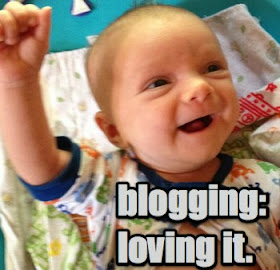I wanted to know more. So I called one of the researchers, Tiffany Brannon. I talked with Tiffany, and also with Hazel Markus and Alanna Connor, Stanford social psychologists who recently co-authored a pretty fascinating pop-science book about understanding cultural difference. And then I started talking with Rodolfo Mendoza-Denton, a UC Berkeley psychologist who blogs under the title Are We Born Racist?. The book of the same title that he edited is rocking my world, both as a museum professional who cares about inclusion and as a new mother.
It's impossible to process everything I am learning from these four psychologists in just one blog post. I am just starting to dive into the science of intergroup relations (psychology-speak for social bridging), and I greatly appreciate these individuals who are working to popularize and open up what could otherwise be esoteric research. So consider this just the first of many posts related to issues of cultural inclusion, evaluation, and impact. I realize that I may sound like a college freshman who just discovered Psych 101, but heck. This blog is about shared learning, and I went to engineering school.
My biggest question for these social psychologists is this: how do we apply their lessons to our work? At my museum, we pride ourselves on developing programming in a collaborative way that emphasizes diversity and intentionally encourages social bridging by bringing people together from different walks of life around cultural experience. We have witnessed and experienced incredible moments of transformation: homeless people and history buffs working together on historic restoration, graffiti artists and knitters collaborating on new artistic projects, visitors from different backgrounds making collages, or sculptures, or dance performances together. Our theory of change posits that when we develop projects that bridge “unexpected connections” between diverse people and ideas, people build understanding and social capital with community members from different cultures, generations, and backgrounds. But how do we know whether these efforts are working? Are we building social capital or just accumulating feel-good anecdotes?
Some irrational part of me hoped these social psychologists would whip out a magic list of prescriptions for successful social bridging or a checklist of indicators of its incidence. That didn't happen. But each of these studies yields another useful nugget. In the case of the Stanford study, I was fascinated to learn that the content of the music video was significant in terms of signaling change in prejudice. We often invite visitors to collaborate on activities comparable to making a music video--but we could be more mindful and strategic about the themes and content of these activities.
Reducing intergroup bias isn't a primary goal in all of our work, but in some projects, it's of particular interest. As we start the process at our museum of updating our permanent history gallery, one of our specific goals is to increase intergroup understanding in our community. We hope that visitors will not only learn about our diverse roots but be able to identify and transform some of the persistent challenges that divide us. We have some strategies for tackling this: convening diverse content advisors, incorporating anti-bias educational approaches in our design, developing participatory opportunities for visitors to connect past to present. But how will we know if we are actually achieving our goals? How can we assess the success of our social bridging efforts, and what can we learn from those measurements to improve our practice?
I have seen a lot of inclusion practices and policies in museums and cultural institutions, but I haven't seen many evaluations of their success. I think the general sense in our field is that it is too hard to measure these kinds of things, beyond counting the number of participants from different backgrounds.
But when I asked Tiffany Brannon how social psychologists measure something like prejudice against Latinos, she immediately brought up three different ways:
- Non-verbal communication. You can video-record interactions among participants, and then look at various non-verbal indicators of comfort or discomfort: who do individuals stand next to, do they make eye contact, how do they position their bodies. You can measure the change in that comfort before and after the research activity. While this would be difficult to do in a museum en masse, it could certainly be done with a small representative sample of visitors.
- Implicit Associations test. This test, which many of us have experienced in some form (perhaps at a science center), asks participants to sort words and pictures as quickly as possible. It reveals unconscious associations, for example, between skin color and criminality, or weight and intelligence. There are many forms of the test and it can be modified to target specific questions of interest. Measuring the change in implicit associations over time is a proxy for change in bias. Check out the range of demonstration studies online to see the possibilities.
- Direct questioning. In the music video study, Tiffany and her research partners went back to participants six months after the activity and asked a series of questions about their interest in interacting with Latinos and their perspective on immigration policy questions that significantly impact Latinos. While it is not easy to ask directly "what do you think about XX people?" and get a truthful or useful answer, it is doable to ask proxy questions that are shown to be correlated with bias against particular groups. This technique is particularly interesting to me because our county already manages a bi-annual community assessment project that asks direct questions about perception of prejudice. We might be able to tie our efforts to their research AND show that participation at the museum yields a statistically significant different result (or not).
Have you done research on social bridging in your cultural practice? What would you like to learn, and what have you discovered?



